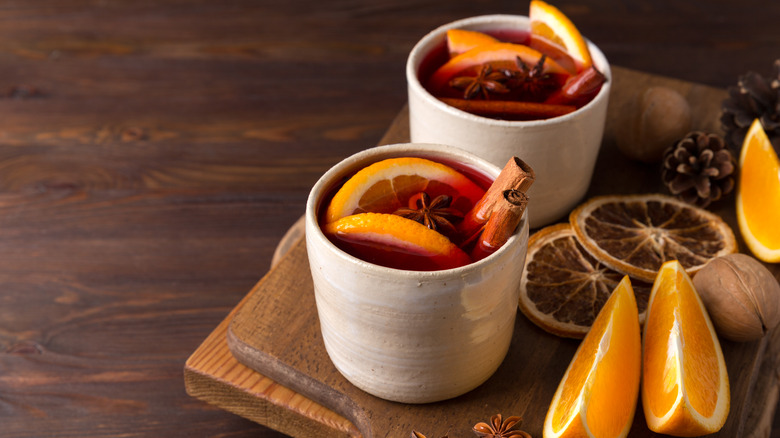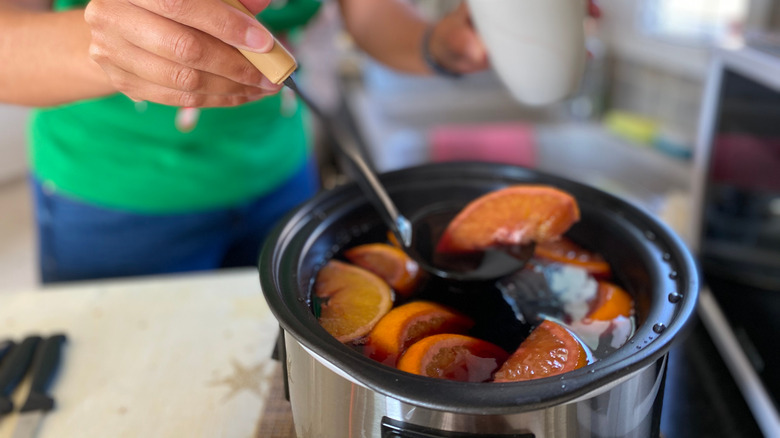Why You Shouldn't Prep Mulled Wine In Advance
The holidays are right around the corner, and so is everyone's favorite boozy party drink: mulled wine. To learn the best practices for preparing it, Food Republic turned to Gabriel Corbett, sommelier at the two Michelin-starred tasting counter, JÔNT, for tips on how to make mulled wine easily at home.
"Since the wine will oxidize, I wouldn't make the mulled wine before the day of the event," says Corbett. "The off flavors will make the whole batch less pleasant and more vinegar-y." Sometimes, letting wine breathe a bit before drinking enhances its fruity flavors and softens the sharpness of tannins, making it smoother and more palatable. However, too much air exposure causes wine to go flat and tart, ruining the flavor profile of your mulled creation.
As with all things related to cooking, oxidation is a balancing act. Mulled wine has plenty of other flavors like cinnamon, cloves, and star anise to carry a low-quality bottle, but wine is still the main ingredient. You need to treat it with proper care and timing to maximize its flavor, or you risk wasting your preparation time on something that ends up, at best, just okay. But don't worry — Corbett gave us the scoop on when to start your mulled wine to prevent over-oxidation.
When and how to start your mulled wine, and what to do with leftovers
Oxidation is only one part of the timing for good mulled wine. You need to let your mixture sit long and hot enough for the liquid to absorb the flavors of all those wonderful spices, but not so long that you lose volume or alcohol to overheating.
"I would probably start it in a slow cooker on high about an hour or two before your guests arrive and then turn it to keep warm (or lowest setting) once they arrive," Gabriel Corbett tells us. High initial heat ensures the mixture is hot enough to pull flavors from the spices, while the relatively short time helps preserve the wine's original flavor. Remember, a good mulled wine borrows flavors from its dry ingredients, but isn't overwhelmed by them. The best bottles to use for mulled wine are medium or full-bodied, with flavors strong enough to cut through all the spice.
While mulled wine can be saved and reheated, it's best fresh. However, if you have leftovers, consider repurposing them. You could elevate boxed brownies with a splash of the wine, or try using some to make red wine-poached pears. Of course, there's nothing wrong with simply simmering it in a pot until it reaches 149 degrees Fahrenheit and enjoying a mug after your party. In an airtight container, mulled wine lasts three to five days in the fridge.


